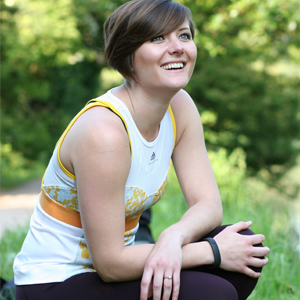For both active and inactive people, the hips are one of the most common problem areas in the whole body. A contributor to low back pain and sometimes also knee pain, tight hips deserve more attention than they’re often given. But if the risk of pain and injury isn’t enough to convince you (perhaps you’re the more performance-driven type?) then what if I told you that tight hips could be holding you back from achieving full potential in sprint speed, deadlift strength, Olympic weightlifting power and even… wait for it… #bootygains?!
The Cause of Tight Hips
We’re not born with tight hips – look at any toddler if you want proof. When a child picks up a toy from the floor they don’t hinge at the hips like adults do; they sink into the most perfect squat you’ll ever see. It’s even a resting position during play! Ask anyone who’s ever taken on “Sally” in CrossFit and they’ll tell you that the bottom of a squat certainly doesn’t feel like a rest position when you’re an adult.
So what happened to make us all so hip-immobile?
No prizes for guessing this one – we simply spend far too much time perched on our bottoms, the biggest muscles in our body! The modern sitting position weakens the glutes and tightens the hip flexors, meaning overcompensation to gain range of motion, strength and power in other positions from the lower back and the knees.
Why is Hip Mobility so Important?
As well as being a contributor to pain and injury through compensation of the lower back and knees, there are a number of performance-related reasons to worry about the amount of movement you have in your hip joints:
- Strength – the strongest lifters are those who utilise their full range of motion. Compound moves become that much easier when you are engaging your muscles in the correct way. But also, flexibility can be an advantage in Olympic lifts – like the clean and jerk for example: the ability to throw yourself under the bar means that the weight has less distance to travel, meaning less effort needs to be exerted.
- Tension – the ability to sink deeper into a squat gives you more driving power through tension created on the stretching muscles. This can be used to explode up, e.g. in the jerk, or plyometric exercises like box jumps.
- Power output – mobile hips mean you’ll use your glutes and hip flexors more efficiently, allowing a powerful hip extension – something that’s required for a plethora of exercises, including kettlebell swings, deadlifts, squats, Olympic lifts and other explosive moves.
- Speed – any sprinter will tell you that strong glutes and hip flexors are the key to a fast time on the track – the power generated through the hips is what drives them forward.
Exercises for Regaining Hip Mobility
So now that you know why you get tight hips, and why it might be affecting your performance, it’s time to look at what you can do to regain that lost mobility – and sustain it. The following exercises are a mixture of those you can perform before training (after your warm-up) to help prepare your hips for exercise, and those that are good for post-workout or just general evening stretching.
Hip Floss – Pre-Exercise
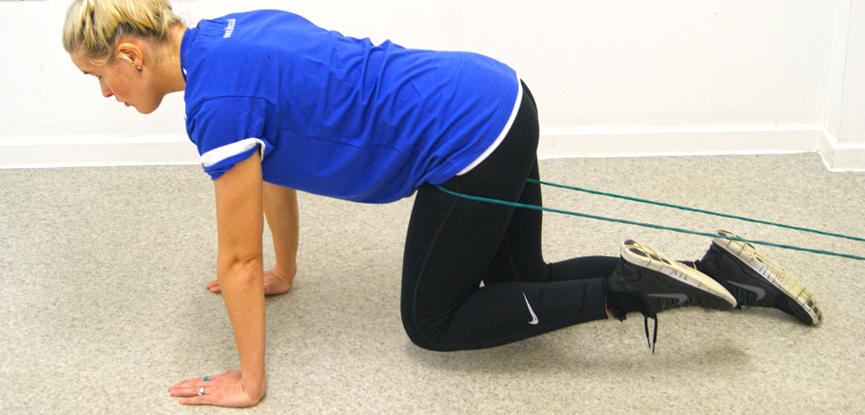
Sound strange? We have Kelly Starrett to thank for this term!
- Attach a medium-weight band around a fixed object (e.g. a post) and stick one leg in with the loop of the band just below your hip joint.
- On all-fours, with the outside of your hip facing the anchor point, crawl yourself away until the band is taught.
- Circle your hips clockwise and anti-clockwise. The band allows your hip joint to be opened up slightly, temporarily removing restrictions while you mobilise.
Lunging Stretch – Pre-Exercise
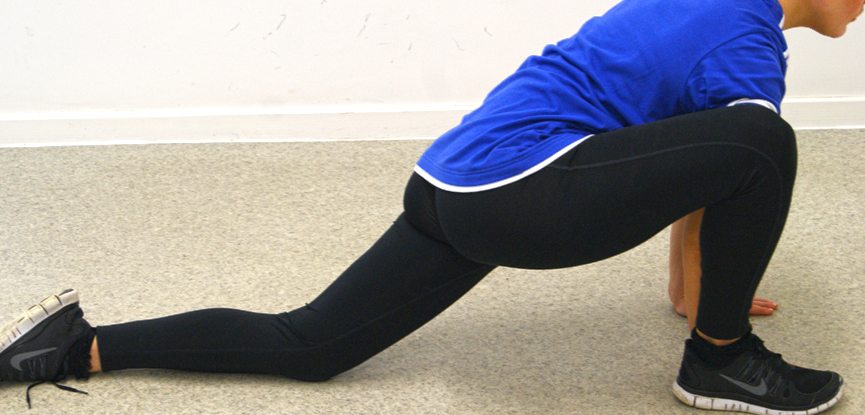
Keep this series of movements flowing without holding them for too long as the aim here is to mobilise the joint, not relax the muscles.
- From all fours, take a big step forward to place your right foot to the outside of your right hand.
- Sink your hips forward to stretch the back hip flexor
- Lift your right hand and push your right knee outwards.
- Step back and repeat on the left leg.
Banded Squat Stretch – Pre- and Post-Exercise
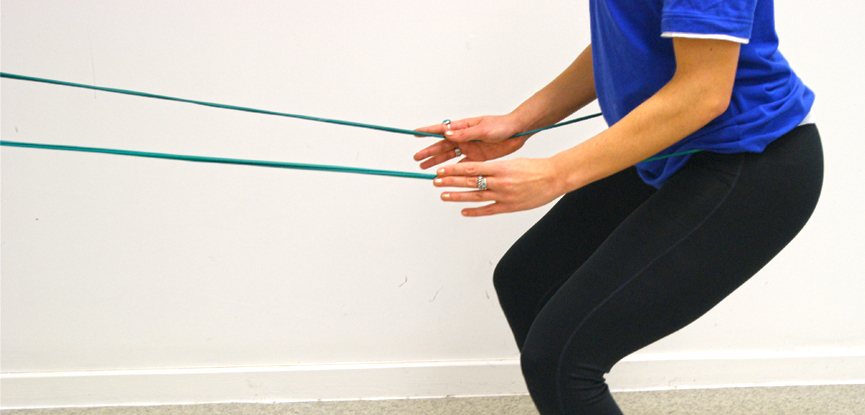
This move can be kept short and sweet with a few repetitions for pre-exercise, or held as a static stretch for post-exercise.
-
- Attach a medium-weight band around a fixed object (e.g. a post) and step into the slack with both legs, pulling the band around the back of your hips.
- Step back until the band is taught then sink down into a squat, holding onto the post for support. The band should hold you in an upright position, allowing you to sit deeper into the squat. If you don’t feel supported enough, take a further step back and hold onto the band.
Pigeon Stretch – Post-Exercise
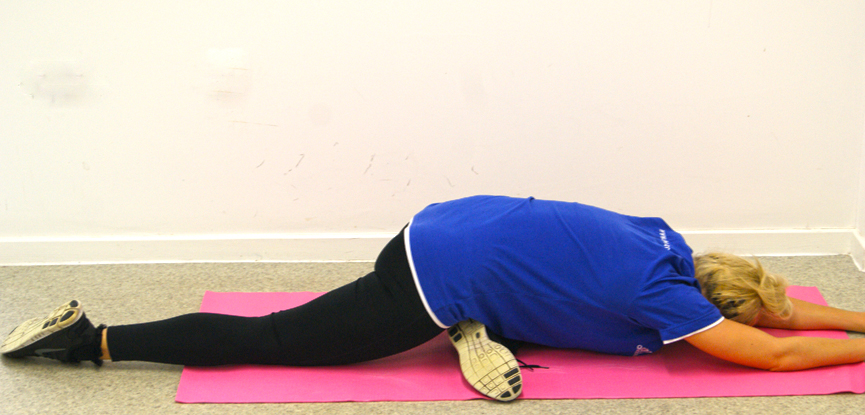
Typically a yoga stretch, this will help open up the hips for all sorts of exercise!
-
-
- From all fours, step your right leg forwards, laying it on the floor behind your hands – your shin should be as close to parallel to your hands as possible.
- Shuffle your back leg further back to sink your hips to the ground. The aim is to get your hips to touch the ground… but this will take time and patience!
- If you want to, lay your chest over your front leg and reach your hands out in-front of you.
-
Supine Wall Squat – Post-Exercise
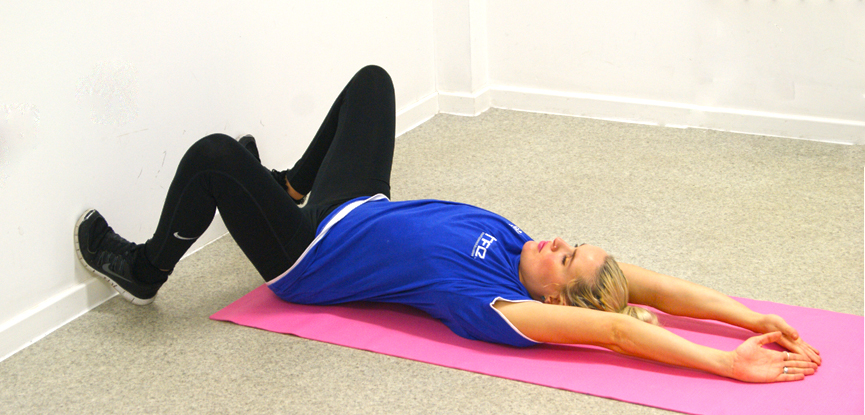
Another stretch that allows you to sink deeper into a squat, this stretch also allows gravity to open up your hips further.
-
-
- Sitting on the floor facing a wall, lie back and place your feet against the wall squat-width apart.
- Shuffle your bum closer to the wall, pushing your knees outwards but keeping your feet in place.
- Hold this position, allowing your knees to fall outwards with gravity. As the stretch eases, shuffle closer and closer to the wall.
- For a bonus stretch, raise your arms above your head and let them lay on the floor to open up your chest and shoulders.
-
Test Your Progress
To get an idea of how much these exercises might help you, film yourself doing a handful of squats before and after performing the mobility exercises – you may well be surprised how much of an affect hip mobilisation has on your technique!


